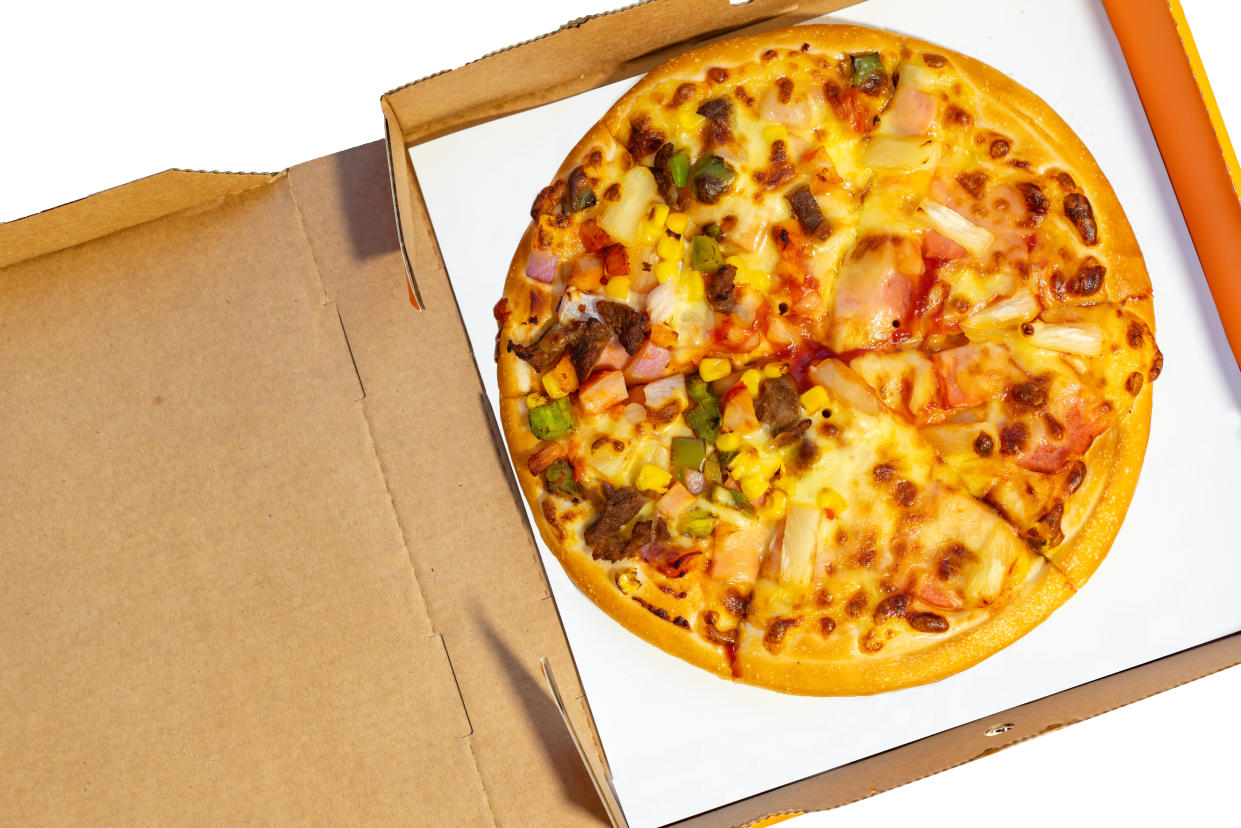Can I eat leftover pizza that's been sitting out overnight? (Please?!)

One of the best things about ordering pizza for dinner is having it for leftovers the next day. However, while pizza may seem like the gift that keeps on giving, there are some things you may not want to think about when you snag a less-than-fresh slice — for example, how long that pizza has been sitting out in the first place.
“Leftover pizza has taken on a mythical status that it is somehow above making you sick even if it’s left out on the table overnight,” Brian Labus, an infectious disease epidemiologist and assistant professor at the University of Nevada, Las Vegas, tells Yahoo Life. “Unfortunately, that is just not true. Pizza carries the same risks as any other food and needs to be handled safely.”
He adds: “No one would eat a piece of cheese or a slice of pepperoni that has been sitting out on the counter all night, but turn them into pizza and people think they are OK to eat.”
While foodborne illness is a possibility when it comes to leftover pizza, it’s not all doom and gloom. There are plenty of ways to ensure you can still enjoy that cheesy, saucy goodness safely. Here’s what experts want you to know.
How long can pizza stay out on the counter? Can you leave it overnight?
Let’s say you’re having a party, and you leave the remaining slices of pizza in the box on the counter until you’re ready to clean up for the night — or worse, until you remember it’s there the next morning. Can you still enjoy a slice?
Labus says standard food safety rules apply here: It’s important to keep foods out of the temperature danger zone — between 40°F and 140°F — which is where bacteria grows and thrives.
“According to the USDA, food can stay in this zone for two hours, but only one hour if the temperature is above 90°F,” says Labus.
Bryan Quoc Le, food scientist and author of 150 Food Science Questions Answered, tells Yahoo Life that while ingredients like pepperoni may be able to stay stable due to preservatives like nitrites, “tomato sauces and cheese can readily breed bacteria, some of which can cause foodborne illness.”
With pizza, Le says it’s particularly important to pay attention to food safety guidelines because there are few outward signs that it’s gone bad.
The consequences of eating pizza after it’s grown bacteria? Not so fun. The biggest concern is that you could become sick with a gastrointestinal illness, which can cause vomiting, diarrhea and potentially a fever, says Labus. “Bacteria like Salmonella,Shigella and Campylobacter are among the most common, and they cause diarrheal illnesses with a fever a couple days after you eat them,” he explains. “Other bacteria like Staphylococcus aureus or Clostridium perfringens multiply on the food and can leave a toxin behind, which causes vomiting a few hours after you eat them.”
As Le points out, our food supply is generally safe and proper cooking should kill the pathogens that make us sick — so there shouldn’t be bacteria on the pizza that can make us sick in the first place. However, that doesn’t mean we shouldn’t pay attention to food safety by leaving pizza out overnight, he warns.
“The system isn’t perfect and things go wrong sometimes,” Le says. “The odds of getting sick might be very small overall, but the consequences can be serious if you do get sick. And you might have gotten sick from that leftover pizza in college but didn’t realize that is what caused your illness.”
What’s the best way to save pizza?
Pizza is great the next day — and you can even keep it in the fridge for up to four days, per the USDA’s regulations on leftovers.
Labus says it’s important that you store your leftover pizza away from other contaminants in the fridge. (So don’t let any raw chicken drip on your plated pizza or any other food in your fridge.) If you want the best taste, he says you should avoid tossing the pizza into the fridge while it’s still in its box. “The pizza will dry out pretty quickly and might pick up odors from other foods,” Labus notes. “It won’t be unsafe to eat, but it also won’t be very good.”
For the safest method that also makes for the best leftovers, Le recommends wrapping pizza “in plastic Saran wrap, followed by wrapping it in aluminum foil, to limit the contact points with the atmosphere in the fridge.”


